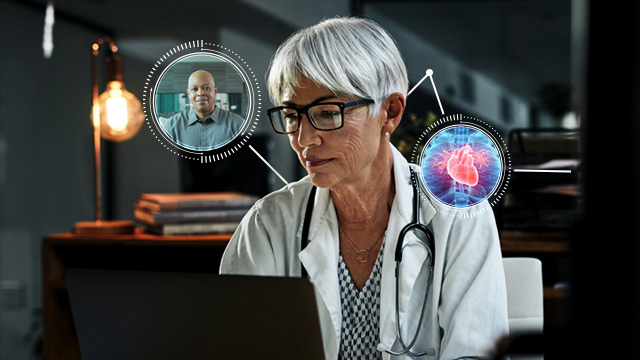
COVID-19 and the new patient experience

Today, everyone is digging out from the initial impact of the COVID-19 pandemic. In doing so, we’re collectively defining a new order for how health and medical services will look and operate going forward.
This effort is not without its challenges. In the United States, hospital operating margins are down 96 percent since the start of the year. Most hospitals run on razor-thin margins to begin with, which means that health leaders face an uphill economic climb.
Despite such challenges, forward-looking health leaders are using the situation as a learning opportunity when it comes to reimagining the patient experience. The global response to COVID-19 has accelerated the digitalization of health at a rate we could not have imagined previously. As Microsoft CEO Satya Nadella said, “We’ve seen two years’ worth of digital transformation in two months.”
How digital transformation can benefit patients
The pandemic has taught us that we can move with agility to make greater use of telemedicine and virtual care. Many have discovered that the thoughtful use of things like healthcare bots can not only reduce reliance on humans to perform highly repetitive activities, but actually improve the consumer experience.
A potential silver lining for clinicians, providers, and health consumers is to use the situation to make improving the future patient experience a front-and-center issue.
The COVID-19 situation we’re all navigating highlights that a patient is so much more than just a patient, but also a consumer who has many needs and wants when it comes to their experiences with the health system.
A study by Change Healthcare suggests that two–thirds of health consumers said the effort to find, access, and pay for care is excessive and a burden. Half of consumers avoid seeking care altogether because it’s too hard to obtain.
Just as the pandemic is causing health leaders to reexamine the experience they provide to health consumers, so too are consumers reevaluating who they will turn to in the future for their healthcare needs, according to a study by PwC.
Moving toward a partnership of care
Getting consumers to come back for care will likely depend on how much trust health systems can build with them over time. This means better serving the needs of health consumers by going beyond the just provision of care.
With consumer trust in mind, forward–thinking health leaders are investing in new models that go beyond seeing patient engagement as just another program, portal, or app. They are reframing patient engagement as a strategy and platform for empowering consumers and meeting a diverse set of needs. They are securely building—as comprehensively as possible—a picture of each individual patient to deliver the information they need, through the channels they prefer.
Components of such new thinking include intelligent, multichannel, care-specific marketing to attract new consumers. It’s a series of online health concierge services to build relationships and differentiate your organization’s mission and brand. It’s a seamless process to coordinate all services when a consumer has a health or medical need.
When healthcare organizations provide such services, they offer more than convenience—they give people a sense of being taken care of. In building such relationships with health consumers, you transform the situation from a transaction into a partnership of care.
Microsoft supports all types of health organizations in their quest to improve patient engagement through the provision of a variety of solutions, including personalizing health services through Dynamics 365, the provision of Microsoft Healthcare Bots, and the use of Microsoft Cloud for Healthcare and artificial intelligence in health.
To learn more about how AI is advancing health and medical services, watch Imagining the Future: Microsoft AI Virtual Summit.




